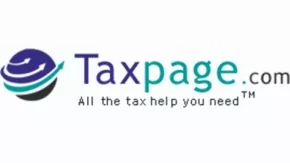- within Tax topic(s)
- with Senior Company Executives, HR and Finance and Tax Executives
- with readers working within the Accounting & Consultancy and Property industries
Overview
The Canada Revenue Agency (CRA) has announced significant changes to the Voluntary Disclosures Program (VDP) as it applies to GST/HST. The updated rules apply to applications received on or after October 1, 2025, and are designed to simplify the process while incentivizing earlier voluntary compliance. GST/HST registrants, businesses, and their advisors need to understand the revised framework to assess their risk and compliance strategies effectively.
Unprompted, Prompted Applications and New Streamlined Process
The VDP allows taxpayers and registrants to correct past reporting errors without criminal prosecution and with potential relief from penalties and interest. Under the prior system, categories such as the Limited Program and General Program were used to determine the level of relief available. The 2025 revisions modernize the program by introducing clearer categories — unprompted and prompted applications — and by streamlining the application process.
Key Changes
- Application date: The new rules apply to applications received on or after October 1, 2025. GST/HST-specific guidance is available in CRA GST/HST Memorandum 16-5-1.
- Unprompted vs. prompted applications: Unprompted applications, submitted before the CRA initiates an audit or compliance contact, will generally receive more generous relief. Prompted applications, submitted after CRA contact, will receive reduced relief.
- Relief mechanics: Unprompted applications are normally eligible for 75% relief of applicable interest and 100% relief of applicable penalties. Prompted applications are generally eligible for 25% interest relief and up to 100% penalty relief. In both cases, successful applicants remain protected from prosecution.
- Simplified process: The CRA has updated Form RC199 and clarified supporting documentation requirements. For GST/HST disclosures, supporting documentation must correct non-compliance for the most recent four years.
Number of Years of Returns Required
For GST/HST voluntary disclosures filed under the revised rules, the CRA requires applicants to file or correct the most recent four years of returns. This applies to both registrants and non-registrants, correcting, reporting, or filing errors. While the CRA may review earlier years if fraud, wilful default, or misrepresentation is suspected, the relief program itself is limited to the four-year period.
Comparison of Old vs. New GST/HST VDP Rules
| Feature | Old Rules (Pre-Oct 1, 2025) | New Rules (Effective Oct 1, 2025) |
|---|---|---|
| Program Categories | Limited Program & General Program | Unprompted vs. Prompted Applications |
| Penalty Relief | Up to 100% depending on category | Up to 100% for both unprompted and prompted applications |
| Interest Relief | Generally 50% in most cases | 75% for unprompted; 25% for prompted |
| Years of Returns Required | Generally more than four years depending on the facts | Standardized to the most recent four years of GST/HST returns |
| Application Form | More complex, detailed | Simplified Form RC199 with clearer guidance |
| CRA Discretion | Broad discretionary power; relief categories are less predictable | Clarified framework; CRA retains discretion, but relief levels are codified |
| Protection from Prosecution | Available under both categories if accepted | Available for both unprompted and prompted disclosures if accepted |
| Wash Transactions | Not specifically addressed; voluntary disclosure possible, but unclear treatment | Explicitly addressed: intra-group or "wash" transactions may be voluntarily disclosed, with relief possible if disclosure is complete and accurate |
Implications for GST/HST Registrants
The revised program affects both the decision to disclose and the preparation of disclosure applications.
- Incentive to disclose early: Enhanced interest relief for unprompted disclosures makes voluntary disclosure financially advantageous where interest is a large portion of the liability.
- Documentation certainty: The four-year documentation requirement for GST/HST clarifies expectations but places responsibility on applicants to prepare complete submissions.
- Administrative simplicity: The updated form reduces complexity, though CRA review and verification remain rigorous.
- Prompted disclosures: Relief is still available, but reduced. Registrants should evaluate timing carefully if they have already received CRA contact.
Wash Transactions
Under the GST/HST rules, wash transactions refer to transactions that occur within an economic group, where goods or services are transferred between related entities and there is no net change in ownership outside the group. These transactions are legitimate and may still have GST/HST implications if incorrectly reported.
- The updated VDP rules allow registrants to voluntarily disclose prior misreporting of wash transactions.
- Relief from penalties and interest may be available if the disclosure is complete, accurate, and made voluntarily before CRA compliance contact.
- Registrants should provide detailed documentation explaining the transactions, their purpose within the economic group, and any prior reporting errors.
- The CRA will assess the disclosure to confirm that the transactions were bona fide intra-group transfers and determine the appropriate level of relief.
- Seeking advice from an experienced Canadian tax lawyer is strongly recommended to ensure the disclosure is properly prepared and all available relief is obtained under the VDP.
Checklist for Registrants
- Conduct a review to identify potential GST/HST errors, such as underreported sales or ineligible input tax credits.
- Determine whether the situation qualifies as unprompted or prompted.
- Collect supporting documents for the most recent four years.
- Consider initiating an anonymous pre-disclosure discussion with the CRA to assess eligibility without revealing identity prematurely.
- Prepare estimates of taxes owing and establish the ability to pay or arrange payment plans.
Anonymous Filing Clarification
While registrants may engage in general or pre-disclosure discussions with the CRA without immediately revealing identity, there is no truly anonymous VDP filing. Protection from prosecution, penalty relief, and interest relief can only be granted once a complete, documented disclosure is submitted under the registrant's identification. Any informal inquiry or discussion does not constitute formal protection or relief.
Pro Tax Tips
- A business with significant historical ineligible ITC claims may save substantially on interest through an unprompted disclosure.
- Once a CRA letter identifying errors has been received, relief is limited. Engaging a Canadian tax lawyer promptly at this stage can protect rights and ensure the strongest possible application.
- Complete, well-documented applications maximize relief; poorly documented submissions risk denial or limited relief.
FAQs
What periods must be disclosed for GST/HST VDP applications?
Applicants must include supporting documentation for the most recent four years when correcting GST/HST non-compliance.
Will a VDP application stop CRA from auditing earlier years?
No. The VDP provides protection from prosecution and relief on disclosed matters, but does not prevent CRA from auditing or assessing other periods, particularly where fraud or misrepresentation is involved.
What are the key changes for the GST/HST VDP program?
The new GST/HST VDP rules, effective October 1, 2025, create a more streamlined system that rewards early voluntary compliance while maintaining the CRA's enforcement discretion. Registrants should assess their risk exposure, gather required documentation, and seek advice from an experienced Canadian tax lawyer to maximize the benefits available under the updated program.
The content of this article is intended to provide a general guide to the subject matter. Specialist advice should be sought about your specific circumstances.


